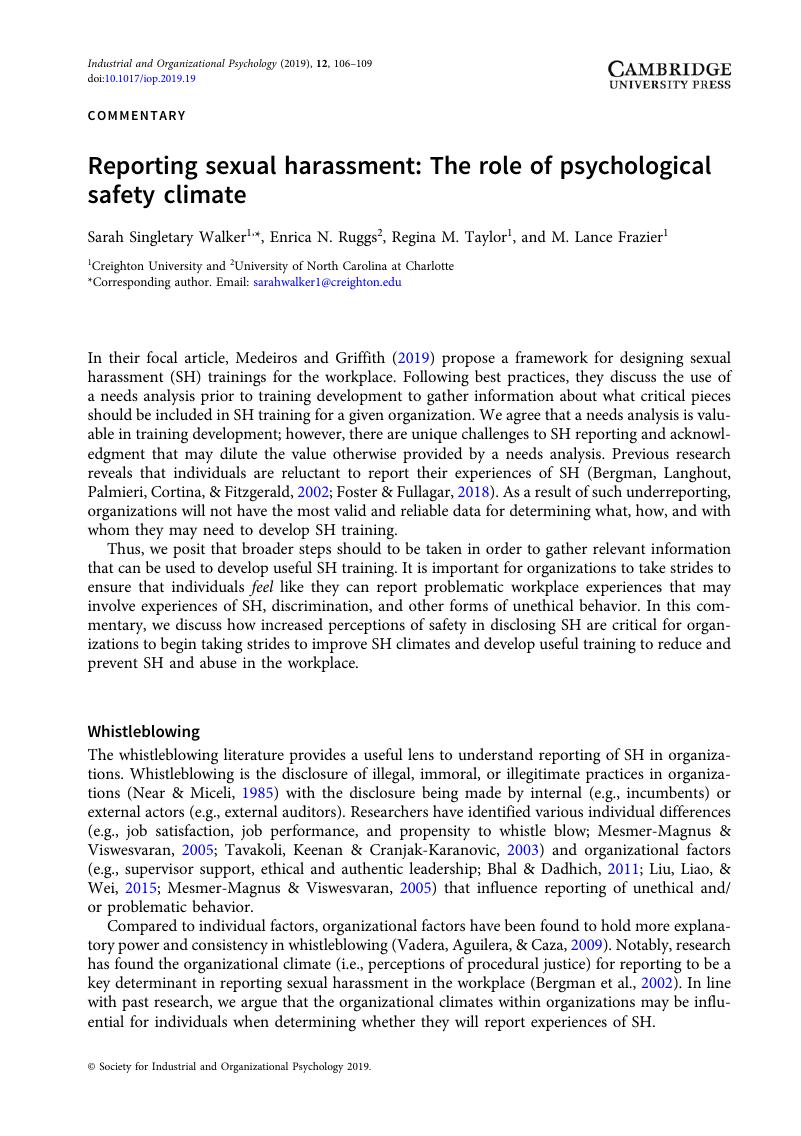Crossref Citations
This article has been cited by the following publications. This list is generated based on data provided by Crossref.
Shufford, Kevin N.
2020.
Handbook of Research on Cyberbullying and Online Harassment in the Workplace.
p.
90.
Shufford, Kevin N.
2022.
Research Anthology on Combating Cyber-Aggression and Online Negativity.
p.
695.
Täuber, Susanne
2022.
Women Academics’ Intersectional Experiences of Policy Ineffectiveness in the European Context.
Frontiers in Psychology,
Vol. 13,
Issue. ,
Sumanth, John J.
Hannah, Sean T.
Herbst, Kenneth C.
and
Thompson, Ronald L.
2024.
Generating the Moral Agency to Report Peers’ Counterproductive Work Behavior in Normal and Extreme Contexts: The Generative Roles of Ethical Leadership, Moral Potency, and Psychological Safety.
Journal of Business Ethics,
Vol. 195,
Issue. 3,
p.
653.
Russen, Michelle
Pasamehmetoglu, Aysin
Guchait, Priyanko
and
Tews, Michael J.
2024.
Coworker support in a sexual harassment climate: A conservation of resources perspective.
International Journal of Hospitality Management,
Vol. 119,
Issue. ,
p.
103710.
Palmieri, Jack
Emmelin, Maria
Svensson, Pia
and
Agardh, Anette
2025.
Aware but confused: conflicted between individual and collective responsibility. A grounded theory study of norms and organisational structures relating to sexual harassment among university students in southern Sweden.
International Journal of Qualitative Studies on Health and Well-being,
Vol. 20,
Issue. 1,



